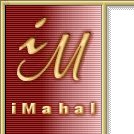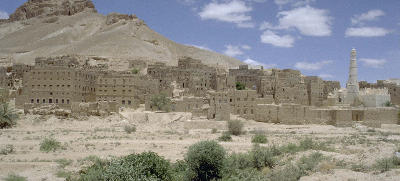
 iMahal Interview Series:
iMahal Interview Series:
David Gimbel
July 22, 2001
iMahal:
Fascinating. There are probably many young people in college who would love to have a respected researcher "steer them" as you put it. So this launched you into a PhD program?
 Gimbel:
Yes, sort of. I ended up at Columbia University, but I was admitted into a peculiar thing called the "Terminal Masters Program." I honestly thought it was kind of suspicious. It seemed to me that maybe they performed mandatory euthanasia on you once you complete the masters degree! The program allowed me to take courses at NYU, which has a famous program called "The Institute of Fine Arts." It's one of the top programs for art history and archaeology in the United States.
Gimbel:
Yes, sort of. I ended up at Columbia University, but I was admitted into a peculiar thing called the "Terminal Masters Program." I honestly thought it was kind of suspicious. It seemed to me that maybe they performed mandatory euthanasia on you once you complete the masters degree! The program allowed me to take courses at NYU, which has a famous program called "The Institute of Fine Arts." It's one of the top programs for art history and archaeology in the United States.
|
..you will always be my student..
|
A teacher in the program was a talented archeologist named Donald Hansen. I started studying with him and then, halfway through the year, I started trying to figure out what I could do to progress beyond the Terminal Masters Program at Columbia: how I would re-apply into the PhD program. But they hadn't figured out a policy for that. At that same point in time, Donald Hansen said to me, "Why don't you come here and study with me?" So, in the middle of the year, despite the fact that I was enrolled in Columbia, I left and went to NYU. I had to ask Edith Porada for her permission to do this, because she had originally taken me on. I said, "I've been given this incredible opportunity, but I want you to understand that I'm your student and I'm certainly not going to do this against your wishes." She said to me, "This is a tremendous opportunity. This will provide a far better career for you than Columbia will. And, in any event, you will always be my student."
Interestingly enough, I switched to NYU and then became her assistant at the Morgan Library and, until the time that she died, my job was basically indexing negatives of thousands of ancient cylinder seals. So there I was researching Near-Eastern art. The work was important: none of this stuff had been indexed or catalogued so I would sit there with museum catalogues from all over the place and try to figure out what period it was from. I spent about two years doing that in the basement of this library. So her generosity continued to benefit me long after I had left the university she was affiliated with.
From there I ended up at the Institute of Fine Arts. I was asked by my supervisor Donald Hansen to go and do survey work with him in Yemen and in Syria. He was looking for a new archeological site. Due to the Gulf War, he couldn't go back to the site he was working at in Iraq. So we went and spent about a month primarily in Yemen and then a couple weeks in Syria looking for sites. We drove all over Yemen, 12 hours a day, just asking people, "Is there a site around here? Is there ancient material?" and then going out and looking at it.
|
..I was trained as a mud-brick archeologist..
|
Finally we found a site that he thought would be productive, in the Wadi Hadhramut, a remote desert area in southern Yemen. It is an extremely hot region and the name Hadhramut is apparently derived from a series of Arabic words meaning "to welcome death." I found it to be an incredibly beautiful region. Donald decided to excavate a site there called Jujah, which is located outside the ancient mud brick city of Shibam, a site which is still inhabited and which is mentioned in the Bible. We ended up excavating the site the following year and that's really where I was trained as a mud-brick archeologist.





